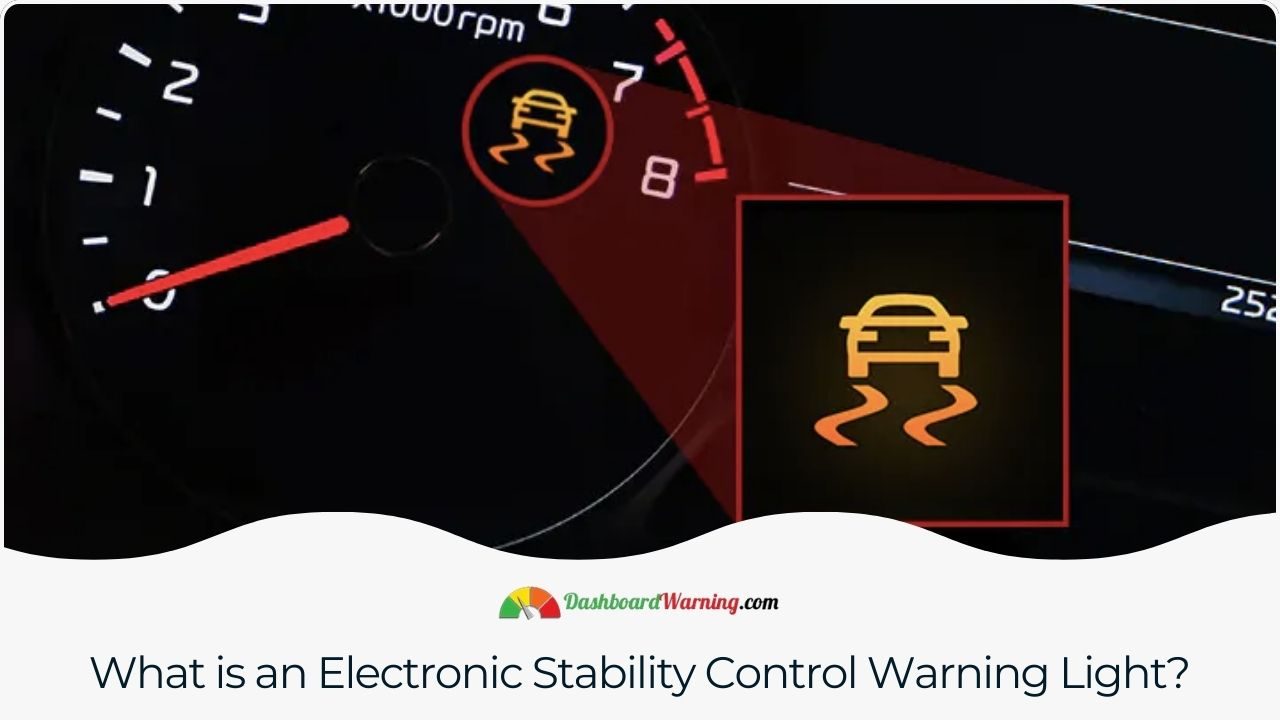Picture this: you’re cruising down the highway, music playing softly, the wind tousling your hair, when suddenly a curious light flickers to life on your dashboard. It’s not just any light; it’s the Electronic Stability Control (ESC) warning light. A playful question arises – what does it mean, and should you be concerned? The answer, however, is not so straightforward. This blog post will delve into the intricacies of the vehicle stability control system and what that ominous warning light could signify.
First, let’s demystify the Electronic Stability Control system itself. This advanced technology is designed to prevent skidding and loss of control. It utilizes a network of sensors that monitor the vehicle’s trajectory and steering input. If the system detects a discrepancy – like the car veering off course while you’re attempting a sharp turn – it automatically engages braking on individual wheels to help stabilize the vehicle. So, when that light illuminates, it’s essentially a friendly nudge, indicating that something may be amiss within this sophisticated safety mechanism.
Now, why does the ESC light come on? It can be triggered by numerous factors. Perhaps there’s a malfunction within the stability control system itself, such as a faulty sensor or wiring issue. Alternatively, it could indicate low tire pressure, which can adversely affect vehicle control. An engaging thought: could something as simple as that flat tire be the catalyst for your dashboard drama? This begs further contemplation, as such warnings are often interlaced with the complexities of automotive health.
If the ESC light is illuminated, it’s prudent to take heed. Analyzing the situation becomes imperative. But before darting to a mechanic or a technician, consider a few simple checks. Start by assessing your tire pressure and tread. Sometimes, the resolution might be as elementary as inflating your tires. If your pressure is normal, the next logical step involves scanning for error codes using an OBD-II scanner. These portable devices can unveil underlying issues that prompt the light to activate.
Now you may wonder, what if this light flashes during specific driving conditions? Well, that could indicate your ESC is actively working to stabilize the vehicle. It’s a visual cue that the system is engaged – a quick reminder that your trusty car is looking out for you. However, if the light remains steady during these driving conditions, this could suggest a malfunction that warrants immediate attention. Think of it as a warning not unlike the smoke alarm going off at the slightest hint of danger. Ignoring it might lead to more significant issues down the road – and nobody wants to navigate that road.
Moreover, let’s bridge the conversation towards maintenance and care. Keeping your vehicle in prime condition doesn’t solely rely on heeding warnings; it also hinges on routine checks and balances. Regular maintenance, such as tire rotations, brake inspections, and software updates, significantly decrease the likelihood of unexpected dashboard warning lights. Thus, embracing a proactive approach can mitigate challenges, enhancing not only the longevity of your vehicle but also your overall driving experience.
Now, suppose you take your vehicle to a trusted technician. They might engage in a protocol involving a thorough diagnostic check, focusing on components most likely to influence ESC functionality. Potential culprits often include the anti-lock braking system (ABS), wheel speed sensors, and even power steering. Each element plays a vital role in ensuring seamless communication within your vehicle’s stability control ecosystem.
After addressing these questions and concerns, you might find yourself contemplating the broader consequences of an illuminated ESC light. Consider the safety ramifications. Without a fully functioning ESC, the risk of skidding during adverse weather conditions or sharp maneuvers increases significantly. Could this warning light serve as an understated harbinger of more perilous journeys? The intertwining dialogue between vehicle health and driver safety cannot be overlooked as we strive to navigate the intricacies of modern driving.
As this exploration comes to a close, let’s circle back to that playful question posed earlier. What if the ESC light is merely a benign indicator, a chance to exercise due diligence? However, what if ignoring it leads to unforeseen predicaments on the road? Navigating the highway of automotive maintenance is often filled with unpredictable twists and turns, but staying informed and vigilant is your best defense against automotive uncertainties.
In conclusion, the Electronic Stability Control warning light on your dashboard encapsulates multi-faceted communication between your vehicle’s systems and you. When it illuminates, it represents a call to action, a reminder to engage in critical self-awareness regarding your car’s stability capabilities. Treat it with respect, perform the necessary checks, and consult with professionals when needed. After all, in the dance of automotive possession, being proactive is always a step in the right direction.
